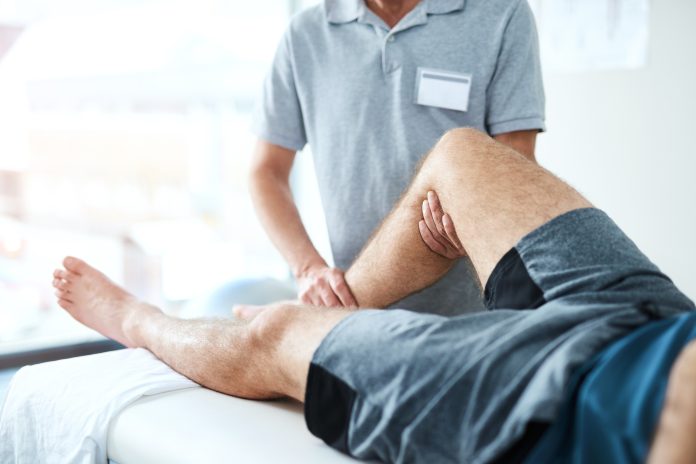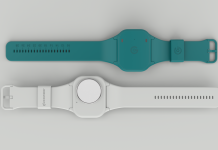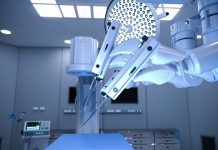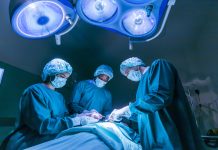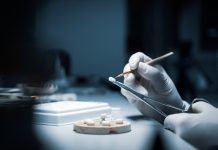Adam Mence from L&R Medical UK explains how the company is empowering patients to manage their conditions while supporting NHS goals for improving care outcomes and efficiency. Overall, investing in self-care and innovative technologies is shown to be both clinically effective and cost-efficient
As healthcare systems grapple with rising patient numbers and financial constraints, innovative solutions are essential. L&R Medical UK has been at the forefront of transforming lower limb management, particularly for patients with venous and lymphatic disease. Their patient-centric, sustainable self-care approach delivers exceptional healing outcomes and drives cost-efficiency and long-term savings for service providers.
Optimising clinical outcomes with self-care pathways
The South West Yorkshire Partnership Trust (SWYPT) tissue viability service, in collaboration with L&R Medical UK, pioneered an advanced self-care model for managing venous leg ulcers (VLUs). This initiative was rooted in evidence- based best practices and supported by patient education and adjustable compression technology.
Clinical outcomes from SWYPT’s service evaluation are impressive. Of 95 patients enrolled in the Leg Ulcer Pathway (Atkin & Tickle, 2019) and Self Care Delivery Model (Hallas-Hoyes et al, 2021), 84 healed by week 24, with 94 patients healing by week 42 – a 99% healing rate. Healing timelines closely matched or exceeded those of traditional clinician-led care. Most notably, these outcomes were achieved with a more than 90% reduction in healthcare professional contact time, freeing up valuable NHS resources.
Financial and environmental savings
The shift to self-care has demonstrated substantial cost savings. SWYPT’s evaluation (Hallas-Hoyes et al 2021) revealed a reduction in individual patient treatment costs from £4,336 under traditional care to just £361 with the self-care pathway. These savings were primarily driven by reduced clinician visits and lower product usage. For a service provider managing over 2,000 new leg ulcer cases annually, potential savings approach £1.5 million per year.
Environmentally, reducing unnecessary clinic visits translates into lowered carbon emissions. Each 100 patients managed under self-care avoided an estimated 1,471kg of carbon dioxide emissions and saved approximately £535 in fuel costs (Hallas-Hoyes et al 2021).
The power of ReadyWrap® in lymphoedema management
For lymphoedema patients, ReadyWrap® adjustable compression wrap garments have proven transformative. A service evaluation of 50 patients in the Lymphoedema Wales Clinical Network (Thomas et al, 2023) demonstrated a reduction in wound presence from 56% to 21% within six months of using ReadyWrap®, episodes of cellulitis were halved, and patient-reported pain and heaviness of the limb significantly reduced. These outcomes are associated with the garment’s ability to manage swelling and improve limb conditions, making it easier for patients to manage their condition and experience improved quality of life.
The financial impact is equally compelling. The evaluation found an average cost saving of over £383 per patient within six months, including the purchase cost of ReadyWrap®. Community nurse visits also reduced from an average of 11.6 to 9.1 visits per patient.
Empowering patients and reducing systemic burden
The strategic deployment of adjustable compression devices like ReadyWrap® supports a shift from clinician dependency to patient self- management. This empowerment enhances the patients’ quality of life, and is reflected in statistically significant improvements in pain, body image, and the ability to shop for clothes and shoes.
Moreover, ReadyWrap® can remove common barriers such as frailty, obesity, and mobility issues, which have historically limited patients’ ability to self-care. By offering a flexible, easy-to- apply solution, ReadyWrap® facilitates autonomy and long-term condition management (Thomas et al 2023; Hallas-Hoyes et al 2021).
Aligning with NHS priorities
These innovations align seamlessly with NHS’ 10 Year Plan (NHS, 2024) goals of improving outcomes, reducing unwarranted variation, and achieving efficiency. As the NHS faces increasing demands, self-care models supported by industry partners like L&R Medical UK can provide scalable solutions.
For senior clinical procurement officers, the message is clear: investment in education, supported self-care pathways, and innovative technologies like ReadyWrap® is not just clinically effective but fiscally prudent. The ability to reallocate workforce capacity while reducing product wastage and lowering emissions addresses immediate fiscal pressures and supports broader NHS sustainability commitments.
The future of lower limb care
The clinical and financial data from SWYPT and the Lymphoedema Wales Clinical Network underscore the potential for self-care pathways to revolutionise chronic wound and lymphoedema management. L&R Medical UK’s investment in education, training, and advanced compression solutions such as ReadyWrap® places them as key contributors to this transformation.
In addition, L&R Medical UK’s comprehensive wound care portfolio, including products like Suprasorb®P sensitive silicone foam dressings, offers further opportunities for cost savings and improved patient outcomes. Clinical evaluations have shown that Suprasorb® P sensitive (Barrett et al, 2021) dressings deliver excellent exudate (wound fluid) management, patient comfort, and skin protection, making them ideal for self-care settings. These products have demonstrated the ability to improve peri-wound skin conditions, reduce dressing change frequency, and enhance patient satisfaction, ultimately supporting sustainable care delivery.
As procurement officers shape future healthcare delivery, embracing these advancements can drive efficiency, patient satisfaction, and significant health system savings. The evidence is compelling: sustainable self-care, backed by a robust, high-quality wound care portfolio from L&R Medical UK, is the future of lower limb care.
References
Atkin, L., & Tickle, J. (2016). A new pathway for lower limb ulceration. Wounds UK, 12(2)
Hallas-Hoyes L, Williamson S, Kerr A, Andrews T, Calladine L. An advanced self-care delivery model for leg ulcer management: a service evaluation. J Wound Care. 2021 Sep 2;30(9):751-762. doi: 10.12968/ jowc.2021.30.9.751. PMID: 34554835.
Thomas. M et al, Cost impact and outcomes of 50 lymphoedema cases using adjustable compression garments. (2023). Journal of Community Nursing. https://lohmann-rauscher.co.uk/assets/clinical-evidence/Cost-impact-and-outcomes-of-50-lymphoedema-cases-using-adjustable-compression-garments.pdf
NHS Long Term Plan. https://www.longtermplan.nhs.uk/ (2024)
Barrett, S., King, B., Welch, D., Scales, A., & Nockels, S. (2021). Suprasorb® P sensitive: A 51-wound clinical evaluation. In Wounds UK: Vol. Vol 17 (Issue No 3, pp. 91–92).

This work is licensed under Creative Commons Attribution-NonCommercial-NoDerivatives 4.0 International.

